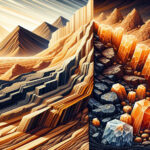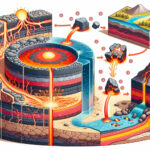Understanding Rock Transformations
Embark on a journey through time and pressure, where layers of the Earth’s crust tell a story of transformation. The rock cycle, a tale of metamorphosis, guides sedimentary rocks on an epic adventure to become the fiery and crystalline igneous rocks. This section reveals how the character of a humble sedimentary rock is reshaped by the Earth’s relentless geological forces.
Imagine the sandy shores and mud-caked riverbanks. Each grain is a potential protagonist in our sedimentary story. These particles, once part of ancient mountain ranges or former living organisms, accumulate layer upon layer, compacted over eons – their journey has just begun.
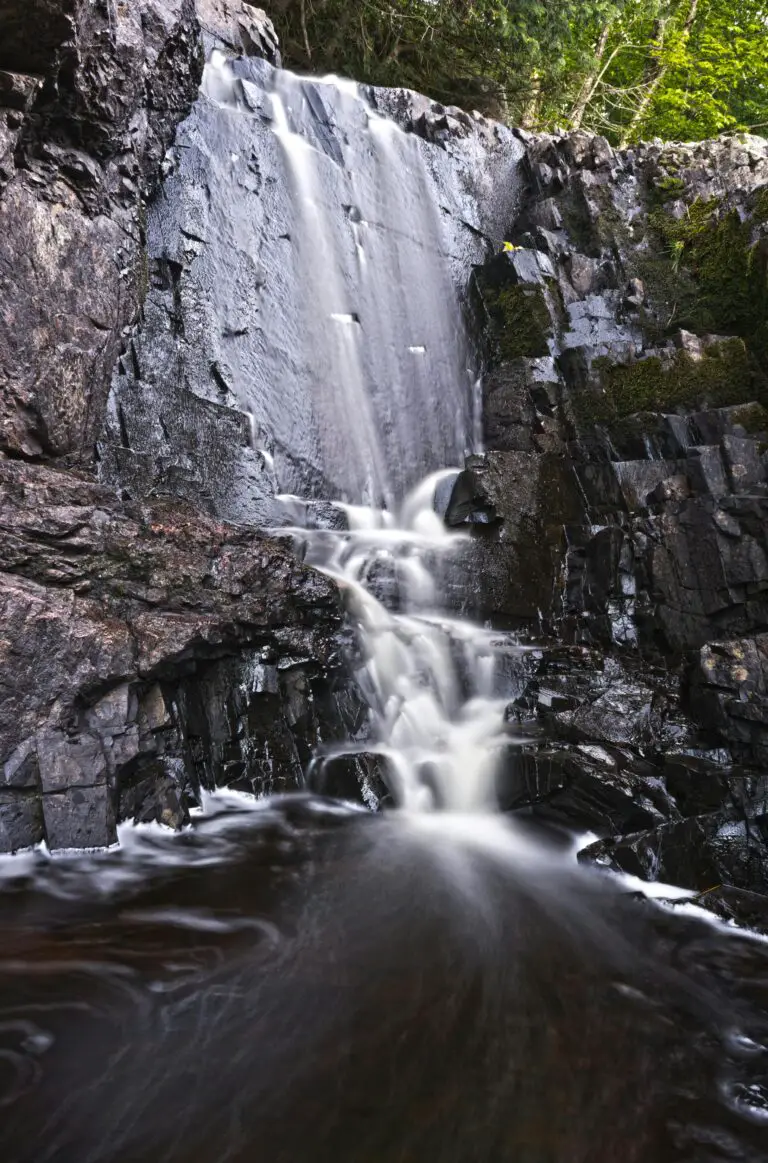
For a sedimentary rock to script its next chapter as an igneous rock, two critical plot twists are required: heat and pressure. Buried deeply beneath Earth’s surface during the process of subduction, where tectonic plates collide and one is thrust below the other, our sedimentary hero encounters conditions unfathomable on the surface. These silent pressures and volcanic heat rival the drama of any forge, stirring a metamorphosis.
It is within this underworld crucible that the sedimentary rock, now stripped of moisture and reeling from the intense heat, begins to melt. The minerals locked within, unable to hold their former bond, dissolve into a molten state, a fiery liquid known as magma. As this magma cools and solidifies — either beneath the surface or after a dramatic volcanic eruption — it crystalizes to form new igneous rocks, each grain a phoenix risen from the ashen past of sedimentary origins.
Through this grand geological process, our hero’s attributes are transmuted beyond recognition — grainy textures are exchanged for interlocked crystals, and the sedimentary pallet is repainted with the vibrant hues of igneous minerals. The journey from the ocean floor or river delta to the heights of igneous grandeur is complete, yet this is but one transitory phase in the perpetual rock cycle, a cycle which tells of the intricate web of geological processes that sculpt our planet’s rocky facade.
Lifecycle of Sedimentary Rocks
Embark on a journey through time as we trace the riveting saga of sedimentary rocks, the master storytellers of Earth’s historical narrative. These geological wonders are born from the ruins of older rocks, plants, animal remains, and minerals, melding together under the forces of time and pressure to craft a page in the grand rock cycle diary. But how does this page turn as they transform into the fiery essence of igneous rocks? Let’s dig in and unearth the secrets of their eternal dance from layer to lava.
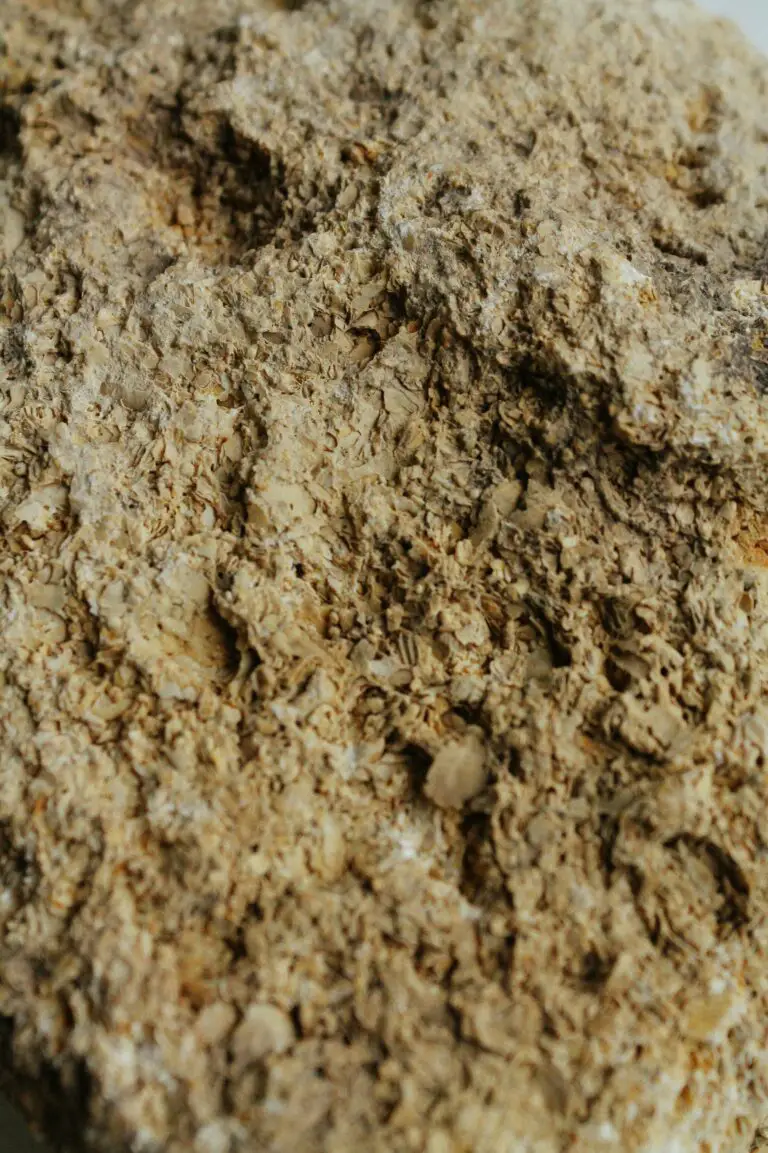
Sedimentary rocks are Earth’s keepers of secrets, recording the whispers of wind, rain, and ancient biological activity within their strata. These rocks like limestone, sandstone, and shale are not just static relics; they’re dynamic players in the rock cycle. Carved by rivers, oceans, and winds, sedimentary rocks archive the planet’s history in layers like pages in a book, holding fossils and memories from millions of years ago.
Picture a tranquil beach where waves gently massage the shores, leaving behind a gift of sand and pebbles. Over eons, these grains are buried and bound by natural cements, forming a rich tapestry of sedimentary layers. It’s this curious alchemy, where the grit of the Earth becomes a testament to the saga of time.
Integral to their character are the properties that definitively mark them as sedimentary: the distinct layers, or bedding, that tell tales of different environments; the textures that hold clues to their transportation stories; and the contents — be it fossil fragments or mineral grains — that whisper of their origins.
And while these geological actors may seem firm in their identity, the plot twist of their tale is that under the right circumstances of heat and pressure, they can reinvent themselves, melting back into Earth’s fiery crucible to emerge reborn as igneous rocks — a true phoenix of the mineral world.
Setting the Stage: Conditions for Transition
You might think rocks are just rocks, but did you know that under the right conditions sediments can script an epic tale of rebirth as igneous rocks? That’s right! This dramatic transformation isn’t just geology—it’s a story of perseverance and change. So, how exactly does this plot unfold? Let’s heat things up a bit and apply some pressure to reveal the secrets locked away deep within Earth’s rocky script.
Imagine sedimentary rocks as actors waiting in the Earth’s green room—the crust. They’ve already been through quite a lot to get here, piling up layer by layer, like stories in a book. But to become an igneous rock star, they’ll need to go through an intense makeover. This requires diving into the depths of the Earth’s crust, where the real magic happens. Think of it as the ultimate spa retreat, with temperatures soaring up to 1200°C and the pressure building up to a mind-blowing 25,000 times atmospheric pressure. It’s hotter than a pizza oven and more pressing than your last-minute deadlines!
Now, you won’t find these conditions just a few feet below your garden. We’re talking about depths that start at 30 km below the surface, in places where tectonic plates might be diving beneath one another. It’s down here that sedimentary rocks really start to feel the heat. The intense temperature and pressure are like the director of our rock drama, cueing the sedimentary rocks to shed their old forms in a process called melting. Just like ice turning into water, our sedimentary rocks morph into a fiery liquid called magma.
But the thrill doesn’t end there! This magma then begins a perilous journey through the crust, shouldering its way through cracks and fissures, sometimes pooling in magma chambers, other times making a grand, bubbly entrance onto the Earth’s surface through volcanic eruptions. Whether it cools slowly underground or rapidly after a volcanic flipout, this final act sees the magma crystallize into the rock stars of our story—the glorious igneous rocks.
For an in-depth look at how this amazing transformation occurs, check out this video:
To understand the prequel to our igneous adventure, journey with us through an exploration of the world of sedimentary rocks, where the story of every grain tells a millennia-old tale.
There’s nothing quite as gripping as the narrative of Mother Nature’s underground theater, where sedimentary rocks are not the end, but merely the beginning of another geological saga. As we’ve seen, with the perfect blend of extreme elements, the Earth directs a performance that recasts old, weathered characters into sparkling new forms, beneath our very feet!
The Metamorphic Bridge
Imagine you’re holding a piece of sedimentary rock. It’s hard to believe that this rock, which once resided peacefully in the deep layers of the Earth’s surface as part of a riverbed or seabed, could transform into a fiery igneous rock. The journey is not direct, though—it takes a detour through an extraordinary metamorphic phase. Let’s buckle up and explore this remarkable transformation.
Firstly, it’s essential to understand that our planet is a massive recycling machine, especially when it comes to rocks. Sedimentary rock, which forms from compressed layers of mineral particles and organic matter over time, doesn’t just turn into molten lava instantly. There’s a process, a sort of metamorphic middleman, that facilitates the transit from sedimentary serenity to igneous intensity.
As tectonic plates shuffle and shuffle beneath us, pressure and heat ramp up in the cavernous depths where sedimentary rocks reside. This intense environment doesn’t melt the rocks—not yet. Instead, it profoundly changes them, metamorphosing them into a new type of rock. This transformation happens at temperatures and pressures that are high enough to alter the mineral structure but not so high as to trigger melting. It’s here that we witness the formation of metamorphic rocks, a true testament to Earth’s dynamic character.
These metamorphic rocks are tough cookies. They’ve been hardened by incredible pressure, heated by the Earth’s inner fire, and warped into new concoctions of mineral goodness. Garnet, staurolite, and kyanite are just a few of the new minerals that can form in these conditions, showcasing a spectacular array of crystalline beauty as if Earth were playing its own version of alchemy. And remember, these aren’t just rocks—they’re storytelling stones, chronicling a history of the planet’s interior processes.
So, what does it take for these mighty metamorphic rocks to make the leap to becoming igneous rocks? Under continued heat and greater pressure, they start to melt, beginning the journey back to a liquid state. This molten material, known as magma, pushes its way through cracks, fissures, and eventually to Earth’s surface through volcanic eruptions. And just like that, as it cools and solidifies, metamorphic rock completes its epic saga, re-emerging as igneous rock.
Through this phenomenal process, we see the exquisite interconnectedness of the rock cycle. It’s a story of resilience, transformation, and perpetual change—a reminder that even the most unassuming stone under our feet has a fiery heart waiting to be reborn as part of volcanoes, lava flows, and granite mountains. Just take a moment to appreciate the literal groundbreaking journey from deep-sea sediment to mountaintop majesty.
Melting into Magma: The Core of Transformation
Imagine standing at the base of a grand mountain, towering stacks of strata looming overhead, each layer a page in Earth’s geological diary. Now envision those same rocks, not solid and stable, but churning in the heat, melting away into a fiery liquid. That’s the stark metamorphosis sedimentary rocks undergo in their extraordinary journey to becoming igneous rocks.
The metamorphosis begins deep within the Earth’s crust, or sometimes even farther, where the tectonic plates conspire in their slow, relentless dance. Sedimentary rocks, fashioned from the compressed sediment of ancient seas and rivers, find themselves on a one-way trip into the Earth’s mantle at subduction zones. Picture a conveyor belt of stone, drawn inexorably towards a crucible of unimaginable heat and pressure.
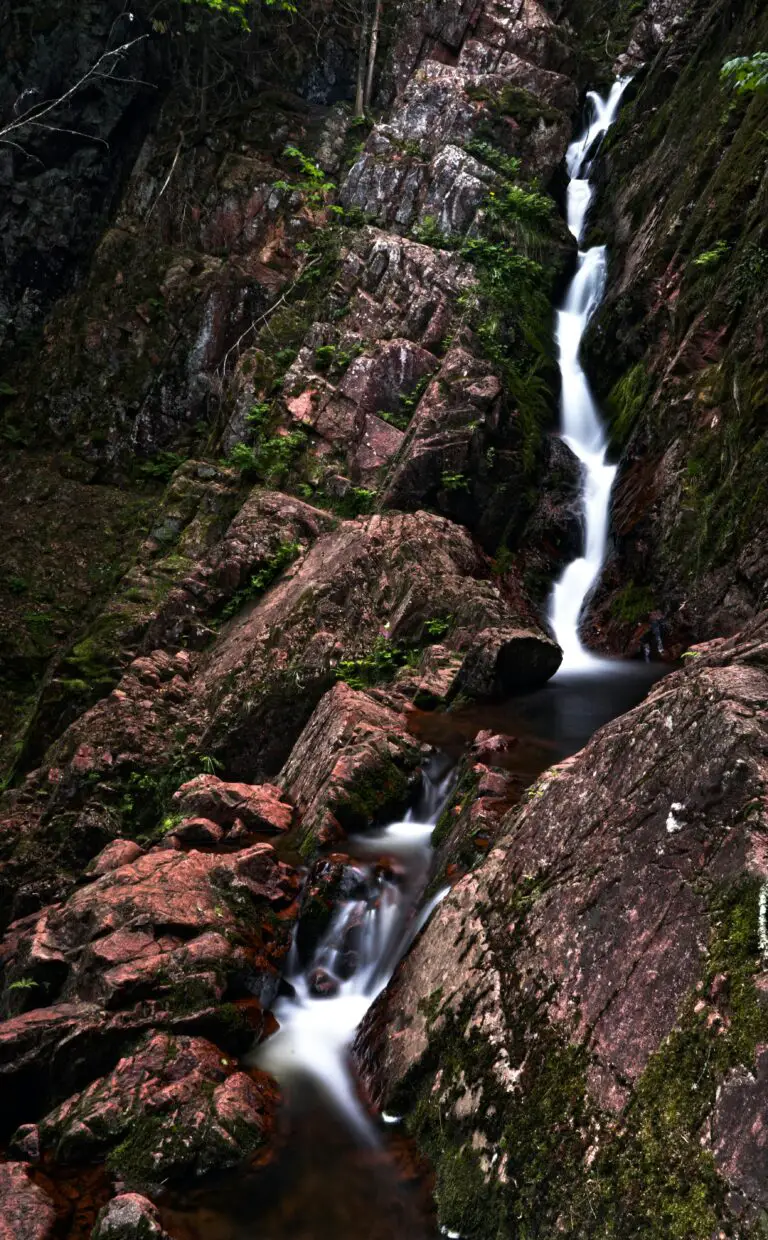
As our sedimentary protagonists descend, the escalating temperature starts to unravel the minerals’ bonds, once locked-in during years of compression. The once-solid rock begins to melt, transforming into magma. It’s a process akin to chocolate surrendering its form to the warmth of your palm. This magma then serves as the raw, molten material that may eventually cool and crystalize to form new igneous rocks. The sedimentary rocks have not just changed; they’ve been reborn, igniting from the very elements that once made them solid.
The journey from layer to lava is more than a poetic expression; it illustrates the perpetual cycle of rock transformation that shapes our planet’s surface. From the grand Himalayas to the humble pebble beneath your feet, the story of their fiery rebirth whispers the untold tales of Earth’s relentless inner workings.
Crystallization and the Birth of Igneous Rocks
Imagine a world beneath our feet, a realm of incredible heat and pressure, where the remnants of ancient sedimentary rocks are compelled to take on new forms—this is the cradle of igneous rocks. Our journey from sedimentary to igneous begins with subduction or melting, where layers long settled are thrust deep into the Earth’s mantle and morphed into molten magma through an alchemy of the elements.

As the magma begins its ascent, a transformation unfolds. Whether it squeezes through crustal cracks to erupt as lava or lingers below, cooling slowly, the final act of creation is crystallization. Picture a symphony of minerals each finding its rhythm, joining in a dance guided by temperature and pressure. The result? A mosaic of crystals that lock together in a solid ensemble, each rock telling a story of its fiery genesis.
But not all igneous rocks are born equal. The speed at which magma cools dictates their character—rapid cooling at the surface crafts fine-grained rocks like basalt, a protagonist in ocean floor spreading. In contrast, the leisurely pace of cooling deep within Earth’s embrace gives rise to granite’s coarse crystals, the bedrock of continents.
Elemental ingredients, too, play their part. A magma rich in silica yields rocks like rhyolite or obsidian, while one less so manifests as gabbro or ultramafic rocks. Just as a chef’s recipe imparts unique flavors, so does the composition of magma endow igneous rocks with distinct physical and chemical identities.
The journey from sedimentary to igneous is a tale of transformation, resilience, and rebirth. Throughout history, these processes have shaped the very ground beneath our feet and continue to mold the dynamic geology of our planet. As we delve deeper into understanding these magnificent metamorphoses, we’re reminded of Earth’s ever-evolving nature—a planet eternally crafting new beginnings from the old.
The Role of Tectonic Activity
When you think about the earth’s surface, it might seem as stable as the ground beneath your feet. But beneath this solid facade, a dynamic dance of tectonic plates is continuously choreographing the earth’s geological features. Let’s take a deep dive into how the slow but mighty movements of these colossal plates can turn the pages of a sedimentary rock’s life story, paving its way to become the fiery igneous rock.
Imagine a sedimentary rock, perhaps a piece of sandstone or shale, composed of layers deposited by ancient rivers or vast seas. These rocks, often recognized by their distinct layered appearance, bear witness to millennia of earth’s history. Now picture this quiet storyteller being swept off its stable shelf by the unstoppable force of plate tectonics. Where is it heading? Straight into the belly of the earth’s most transformative arenas – its subduction zones and volcanic arcs.

Subduction zones are like gigantic recycling factories where one tectonic plate dives below another, dragging whatever it carries along for the ride deep into the mantle. As our sedimentary rock descends into these fiery depths, the conditions become intense. The pressure mounts, the temperature skyrockets, and our rock begins to transmute. The minerals that once lounged in the warmth of the sun now find themselves in the crucible of creation, melting into magma – the molten birth fluid of igneous rocks.
Meanwhile, back at the surface, volcanic arcs are putting on quite the spectacle. These are chains of volcanoes that form at the overriding plate’s edge, thanks to the melting processes happening way down in the subduction zone. Imagine witnessing the powerful eruption of a stratovolcano, spewing forth what was once our humble sedimentary protagonist. As the lava cools and crystallizes, a new igneous rock is born, be it a basalt, granite, or rhyolite.
Take, for example, the mighty Mount St. Helens, which erupted in 1980 with enough force to flatten forests and melt snow into massive lahars. The erupted material, once part of sedimentary layers, underwent a transformation under the influence of pressure and temperature to join the igneous ranks. As we marvel at these natural phenomena, we must respect the earth’s ability to create and recreate. In the grand timeline, tectonic activity is the ghostwriter behind the metamorphosis of rocks, constantly editing the earth’s rocky manuscript.
Real-World Examples
Imagine the earth’s surface as a colossal recycling plant, where rocks are perpetually created, destroyed, and altered. In this natural factory, sedimentary rocks metamorphose into the fiery essence of igneous rocks, completing a transformative journey deep within Earth’s dynamic crust. Welcome to a real-life alchemy, where sediment becomes stone, and stone becomes fire.
One of the most fascinating transformations occurs when sedimentary rocks, typically formed from compressed layers of ancient sediments, are subjected to unimaginable heat and pressure. The result? Igneous rocks, birthed from the melting pot of our planet’s interior. But where can you witness this geological wizardry firsthand?
In the rugged terrains where tectonic plates converge, secrets of this rock transfiguration are openly displayed. Consider the fiery gates of Mount Vesuvius in Italy, where sedimentary limestone once nestled in quiet layers, only to be usurped, melted, and re-forged into new igneous forms like basalt and andesite during violent volcanic eruptions.
Or venture to the shores of Scotland’s Isle of Skye, where ancient sandstones and limestones have been cooked into gabbro and granite. These igneous giants assert themselves amidst the once tranquil sediments, bearing mute testimony to the tremendous forces at play beneath our feet.
A stone’s throw away in the panoramas of the Grand Canyon, layer upon layer of limestone, shale, and sandstone relays a similar tale. Here, the Colorado River slices through the Earth’s crust, exposing a time-lapse of rock metamorphosis. While we don’t see igneous rocks forming in the canyon itself, its ancient history speaks of a time when the region was a hotspot of igneous activity.
Each example offers a scenic chapter in the epic narrative of Earth’s geological processes, where sedimentary rocks embrace their fiery fate to emerge as igneous masterpieces. Consider these landscapes as pages from a stone-bound book, each page a chronicle of the pressure, heat, and chemistry that script the story of sedimentary rocks’ rebirth.
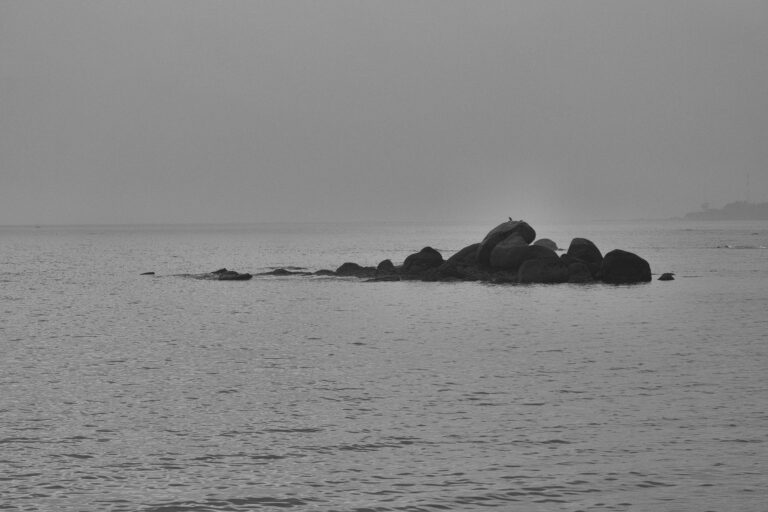
Implications and Importance
Picture this: you’re holding a solid piece of sedimentary rock, the kind that you might encounter along a tranquil riverbank or in the layered cliffs of a dramatic canyon. It’s hard to imagine that this rock, formed from layers of Earth’s history, could ever become the fiery magma that spews from a volcano. But within the great geological cookbook, the planet contains recipes for such astounding transformations.
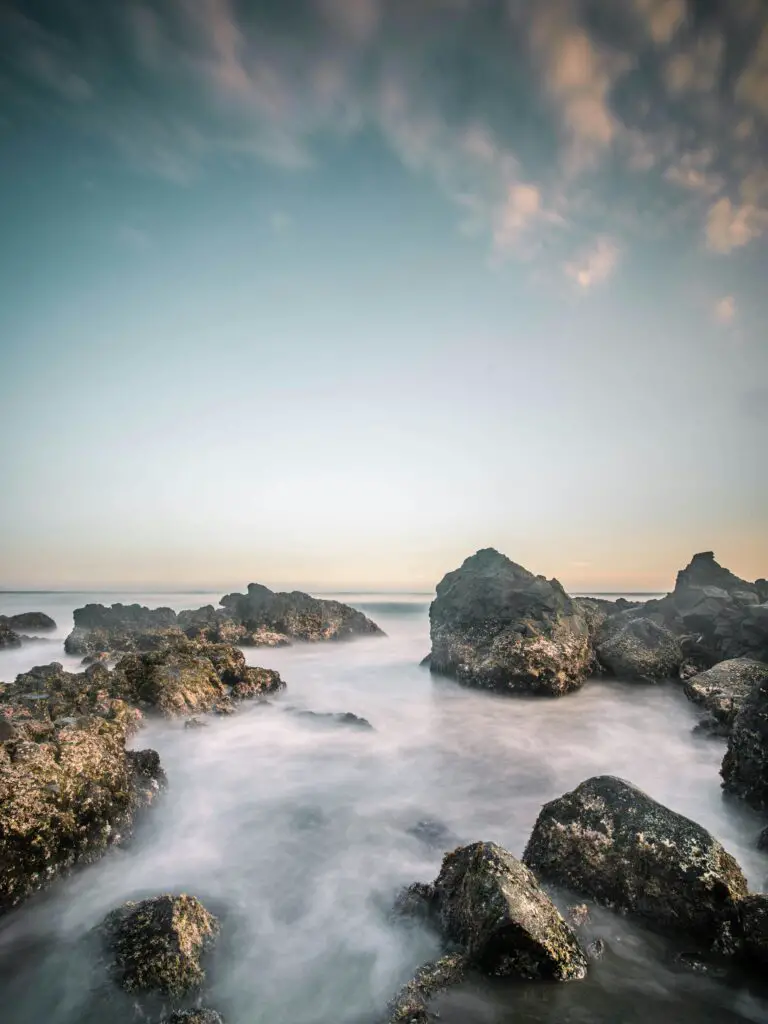
The path from sedimentary to igneous rock is not just a quirky fact of geology; it’s a narrative with substantial chapters on resource extraction and environmental impact. Consider the creation of oil and natural gas, which begins with the accumulation of organic-rich sedimentary layers that, over time and under specific conditions, may transform into the energy sources we rely on daily. Recognizing this geological potential influences where we drill and the techniques we use, highlighting the direct line between geological understanding and our energy futures.
The Ecomony of Earth’s Processes
The multilayered significance of sedimentary rock transformations has a direct bearing on our economy, too. It could shine a spotlight on potential mining sites where metals and precious stones—forged in the fiery kilns below Earth’s crust—might be found. In our world’s constant flow, where the old makes way for the new, understanding these processes equips us with predictive power to discover new resources and, simultaneously, to tread more lightly upon the Earth.
Reducing Environmental Footprint
Furthermore, this geological acumen feeds into how we address the environmental consequences of mining and extraction. Knowing the ‘how’ and ‘where’ of sedimentary rocks’ journey to magma may inform how we mitigate harm to ecosystems and reduce our environmental footprints. Could certain technologies or extraction methods lessen the ecological disruption? Our grasp on the geological narrative gives us clues.
In essence, this tale of transformation is not simply one of academic curiosity; it is a story with tangible implications for sustainability and stewardship. It’s about piecing together the jigsaw of our planet’s processes to both harness and harmonize with the natural world. So the next time you hold that piece of sedimentary rock, remember: you’re not just holding a stone—you’re holding a chapter of Earth’s dynamic saga that, ultimately, affects us all.
It seems there was an oversight in the alt attribute of the image used. The alt text was not correctly replaced with the keyword “how do sedimentary rocks become igneous rocks.” Let me correct that for you by providing the right HTML snippet with the proper alt text:
“`html



“`
With this amendment, the image now accurately reflects the designated keyword for better SEO performance.
Conclusion and Recap: The Rock Cycle Odyssey
As our geological journey concludes, we circle back to the epic transformation story of sedimentary rocks morphing into their fiery cousins, the igneous rocks. Witnessing sedimentary strata undergo metamorphosis under Earth’s relentless pressure and heat, only to emerge as molten magma, crystallizing anew, has been nothing short of spectacular.
Imagine a humble sandstone cliff, biding its time by the sea. Fast forward through an epoch, and that cliff becomes part of the subterranean world, where it succumbs to intense heat and pressure, only to be reborn as granite—the hallmark of igneous kin. This rebirth from sedimentary to igneous is like a phoenix rising, not from ashes, but from layers of ancient sediments.
But the story doesn’t end there. As we’ve explored, every pebble, boulder, and mountain again succumbs to natural forces, weathering and eroding back to sediments. And so, the cycle persists, enigmatic but as persistent as the tides. It’s a testament to nature’s cyclical rhythms and the ever-changing but eternally constant dance of the rocks beneath our feet.
Our time-traveling narrative’s thrilling part—where sedimentary structures plunged into Earth’s fiery depths have shown us nature’s ability to recycle and innovate. Like master artists, the forces of geodynamics carve out new forms from old, presenting a gallery of igneous marvels for us to discover.
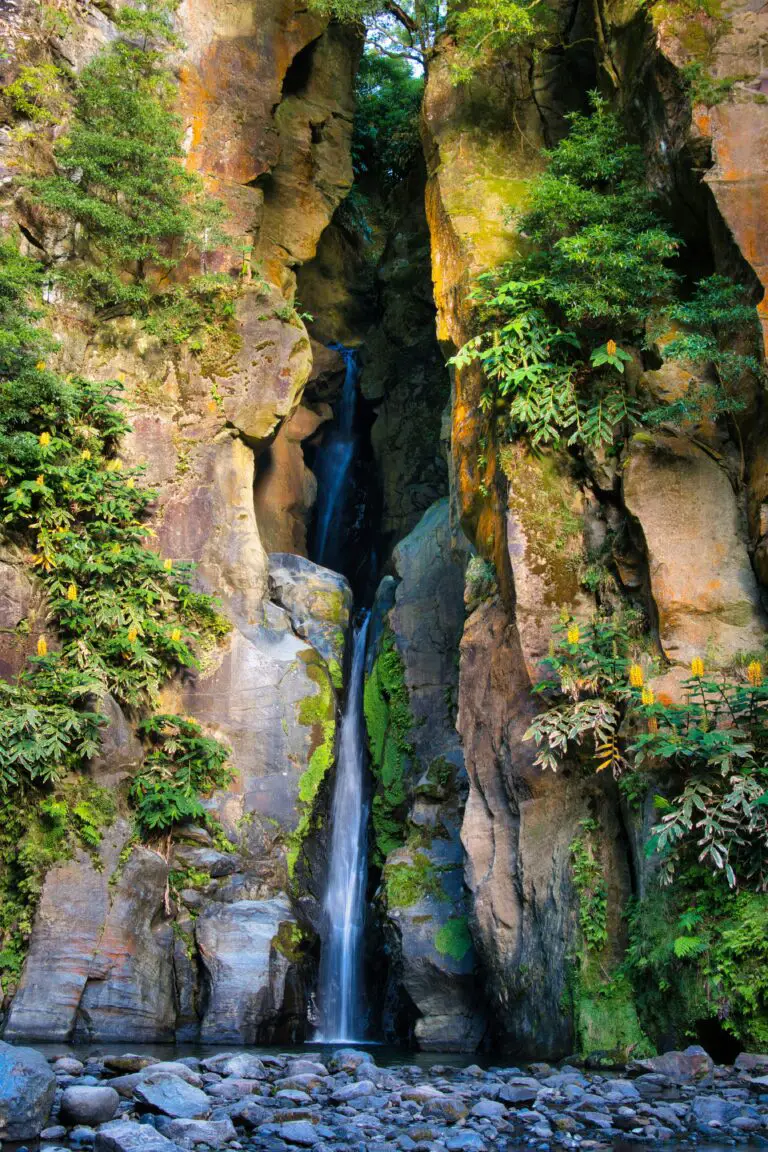

Let’s not forget the scale of these geologic transformations. What begins as a gentle deposition of silt at a river delta can end in a spectacular volcanic eruption, spewing new igneous rock across the landscape. It’s a powerful reminder of Earth’s dynamic character and the potent natural events shaping our planet.
In closing, this cycle of sedimentary rocks’ ascent to igneous majesty is one of Earth’s foundational tales. A testimony to endurance, transmutation, and the restless energy of our planet, our narrative is more than just stones—it’s the story of Earth’s artistic evolution, sculpting a legacy in stone for us to read, learn, and marvel at for aeons to come.
Frequently Asked Questions
Ever wondered how the solid ground beneath us is akin to a grand, but incredibly slow-paced, recycling story? Let’s dive into some common questions that illustrate the phenomenal journey from sediment to stone to fire.
What’s the Rock Cycle, and Where Do Sedimentary Rocks Fit In?
The rock cycle is Earth’s ultimate recycling program, transforming sediments into sedimentary rocks, which can then morph into igneous rocks under extreme conditions. It’s like watching your favorite thriller, where the seemingly innocent sediment gets a fiery plot twist deep within Earth’s crust!
How Exactly Do Sedimentary Rocks Become Igneous Rocks?
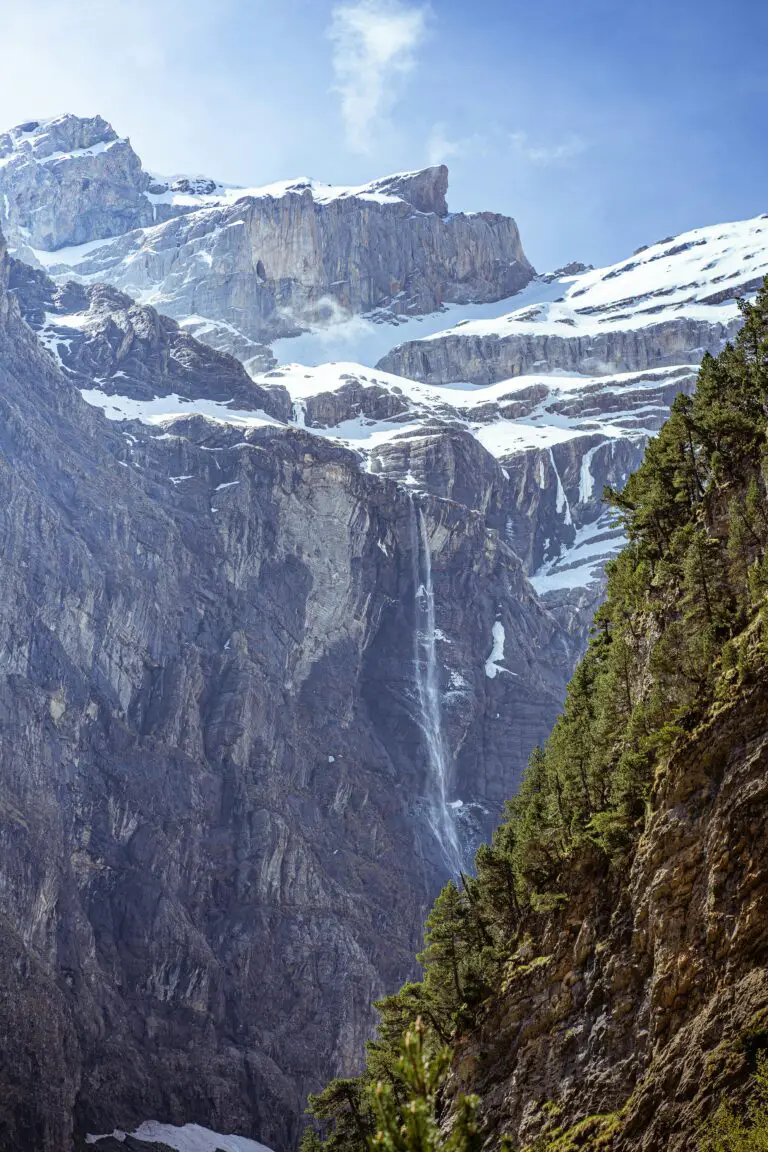

Think of it as an extreme makeover: layers of sedimentary rocks are buried and pushed into the Earth’s mantle by tectonic forces, where they face intense heat and pressure. This metamorphosis is not your everyday spa treatment—it’s a deep-Earth pressure cooker that melts these rocks into molten magma!
Does This Happen Overnight?
In a geological sense, “overnight” might mean a few million years. The transformation is a lengthy process, certainly not your typical time-lapse event. It can take longer than the human mind can comfortably grasp—making it the ultimate patience game for rock enthusiasts!
Can We Influence This Rock Transformation?
Although humans have quite the track record for impacting nature, the formation of igneous rocks comes from forces that are largely beyond our own. It’s a humbling reminder that despite our industrious nature, there are still elements of Earth’s grandeur that remain untouched by human hands.
And there you have it—some rocky revelations about how sedimentary rocks step up their game and turn into the igneous kind. It’s a tale of resilience and transformation that makes you respect the ground beneath your feet just a little bit more.
